Le Grand Appartement du Roi
Setting one’s fashionably heeled feet on the polished parquet of the Grand Appartement du Roi was the highlight of every noble in 17th century France. Today, when visiting Versailles, the usual personal highlight of the visit is the Hall of Mirrors, but to get there one has to stride through the former State Apartment of the Sun King himself.
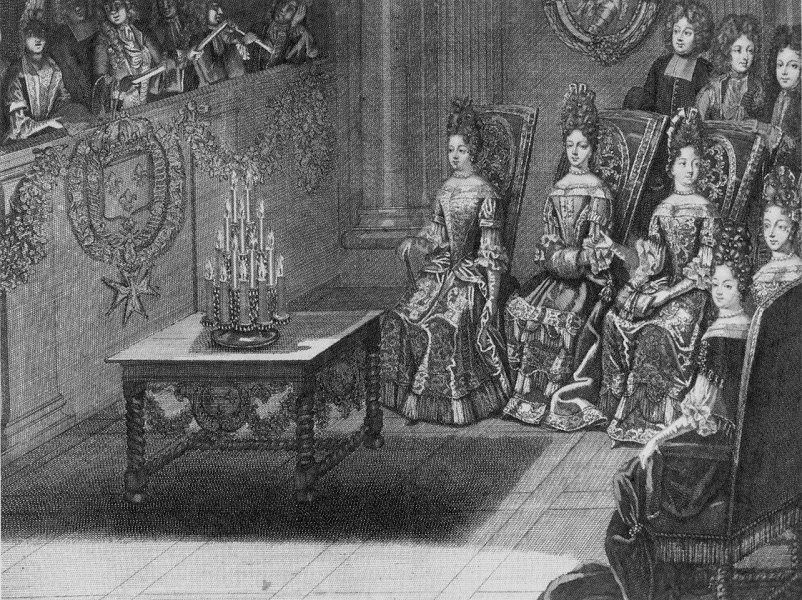
The Grand Appartement du Roi is located on the right side of the principal floor of the palace and mirror the Grand Appartement de la Reine on the opposite side of the château. Both are connected via the Hall of Mirrors, which back in the days was a bit like a giant waiting room.
All of the salons of the Grand Apartment are dedicated to various mythical figures and were open to be roamed by the noblesse during the day and on certain evenings in the week, when the Louis XIV invited to les soirées de l’appartement. These soirées took place trice a week and were a mix of social gathering and party with special rules. For example, while a lower ranking noble was not allowed to directly address a higher ranking noble, they were allowed to do so during the soirées. The higher ranking noble still had to option to ignore being addressed, but that was considered terribly impolite.

The first of the State Rooms is the Salon d’Hercule, dedicated to the Roman adaptation of the Greek divine hero Heracles, was actually the last one to be created. It was the former place of the palace chapel, which covered two floors. The current Royal Chapel of Versailles was finished in 1710 and the fifth and last chapel that was built. The spot its predecessor occupied was turned into a new room. The floor was laid during the reign of Louis XIV, but the decoration not finished until after his death. Thus in the time of the Sun King, this room was not used by him. Later on, it served as location for dinners, balls and receptions.
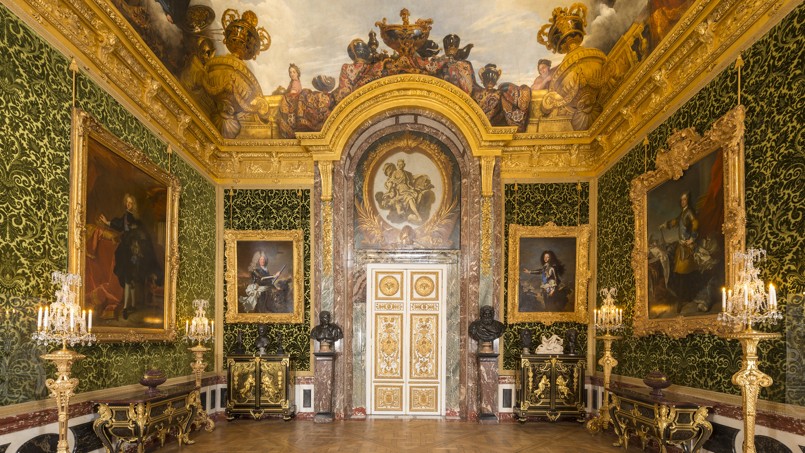
Leaving the Salon d’Hercule, the Salon de l’Abondance is next in line. It was built in 1680 and served long as the antichambre of the room holding the Sun King’s collection of curiosities and rarities. Said room could be accessed through a end door and is now Louis XVI’s gaming room. The ceiling was painted by René-Antoine Houasse and depicts some of the most valuable pieces of the collection. The King loved to show his collection to his guests on all possible occasions and during the soirées de l’appartement the Salon de l’Abondance served as the place for refreshments. Here the thirsty courtier could have a sip of coffee, liquors or wine.
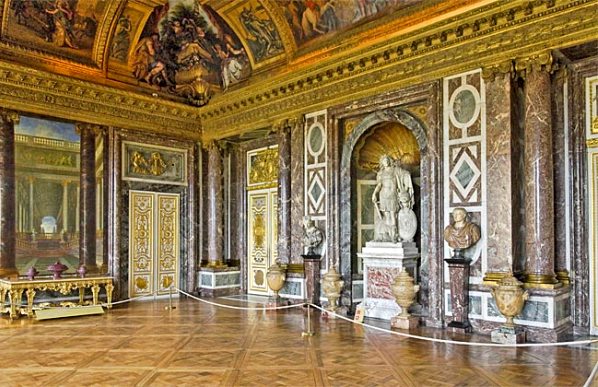
The adjoining Salon de Vénus is the actual entrance to the State Rooms. Before 1752 it was directly connected to the Ambassadors’ Staircase. The Salon de Vénus is decorated in Roman style and the ceiling, painted by René-Antoine Houasse as well, shows the Goddess of love herself and as illustrious figures like Cleopatra. In one corner of the ceiling, a painting of Alexander marrying Roxana is to remind the viewer of Louis XIV’s own wedding. The central piece in the room is Jean Varin’s statue of Louis XIV as Roman emperor. It was placed there around 1682 and replaced in 1687 by an ancient statue of Lucius Quinctius Cincinnatus. During the French Revolution, the Cincinnatus statue fond a new home in the Louvre and Jean Varin’s Louis XIV returned to the spot. While the Salon d’Hercule provided the courtiers with beverages, the Salon de Vénus was filled with pyramids of fresh fruit, even exotic lemons and oranges, various candied fruits, marzipan and baskets of flowers.

Venus is followed by Diane, the Goddess of the hunt, the moon, nature and the sister of Apollo. The ceiling, painted by Gabriel Blanchard, shows Diane watching over the hunt and navigation. Busts line the walls, some coming from Cardinal Mazarin‘s collection, but the central piece is once more the Sun King himself. The Salon de Diane is the home of Bernini’s bust of Louis XIV, undeniably handsome, majestic and awe-inspiring. During the evening soirées, this room was reserved for billiards. The King loved to play billiards and was rather good at it, thus raised seating was placed in order for the dames to admire their King beating his opponents.
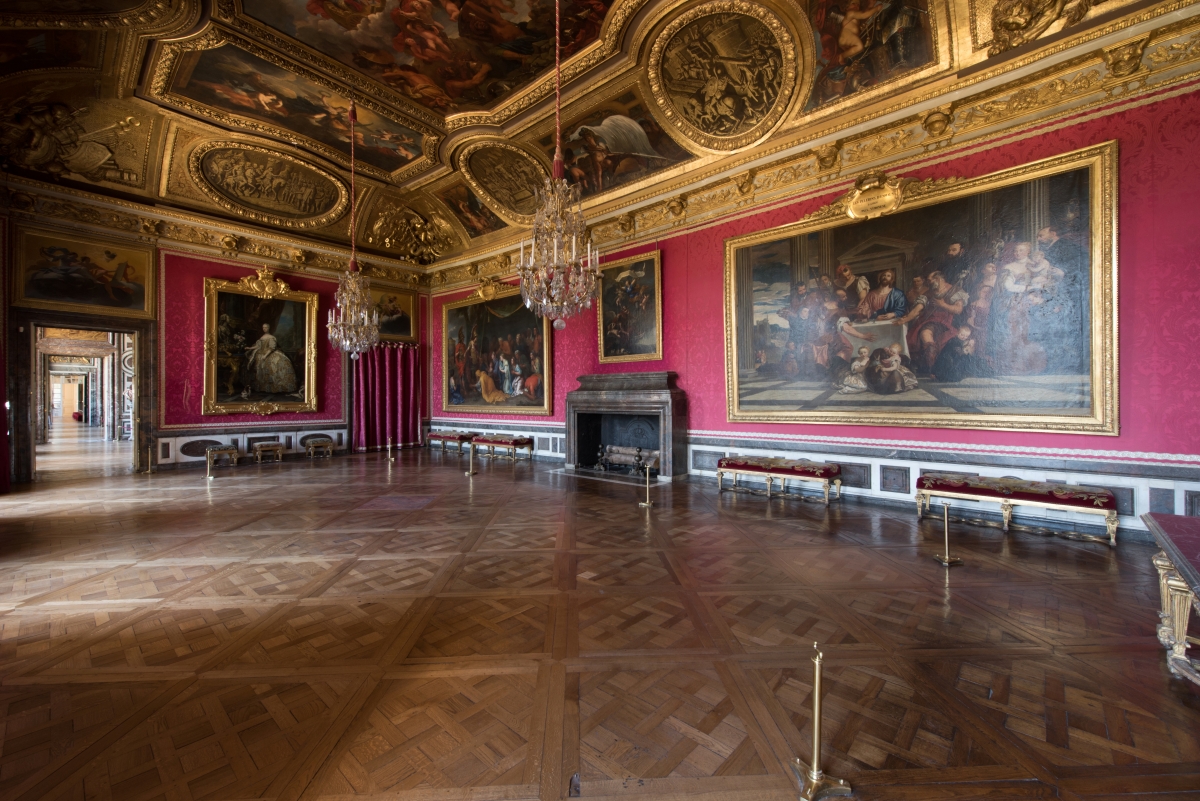
The Salon de Mars, dedicated to the God of War, served as a guard-room and marked the start of the more private rooms of the State Apartments. Here the ceiling was painted by Claude Audran and shows Mars in a chariot being drawn by two wolves. During the evening gatherings, this rather large room was originally used for gaming, with plenty of tables installed, but around 1685 the walls next to the fireplace were opened to install tribunes for musicians and the room’s function altered from gaming to dancing. Louis XV had the tribunes removed again in 1750 and today we can behold two paintings of Charles Le Brun instead.
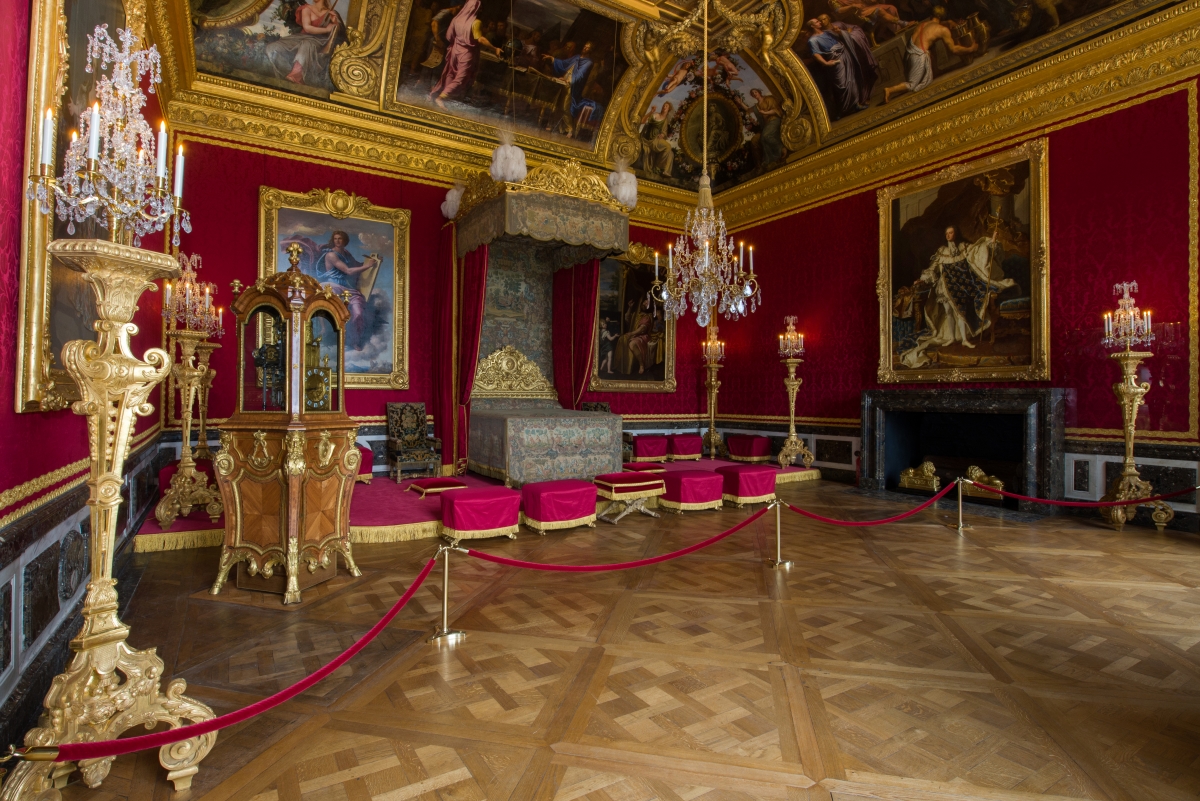
The following Salon de Mercure was officially known as the King’s bedroom, yet it did not really serve as such. The Sun King hardly slept there himself, he preferred a more private bedroom, and the bed was removed to make space for gaming tables for the soirées. The room was used as bedroom only on three occasions, the Duc d’Anjou slept in the room for three weeks as he was announced King of Spain, it was used as bedroom for the wedding of the Duc de Bourbon and Louis XIV slept there for a while as his more private bedroom was being renovated. While there was not always a bed, the room hosted a part of Versailles’ infamous furniture made of solid silver until it had to be melted down to finance the war in 1689 and it was the Salon de Mercure in which Louis XIV coffin was placed after his demise. The bed currently on display, was brought there on orders of Louis-Philippe as Versailles was turned into a museum. It is a lit à la duchesse, just like the one in Marie-Antoinette’s bedroom. In the corner of the room stands a clock designed by Antoine Morand, which was gifted to the Sun King in 1706, and two of his favourite paintings, which were originally in his other bedroom, hang left and right of the bed. David playing the harp by Domenico Zampieri and Saint John on Patmos, which was thought to have been painted by Raphael during Louis’ time.
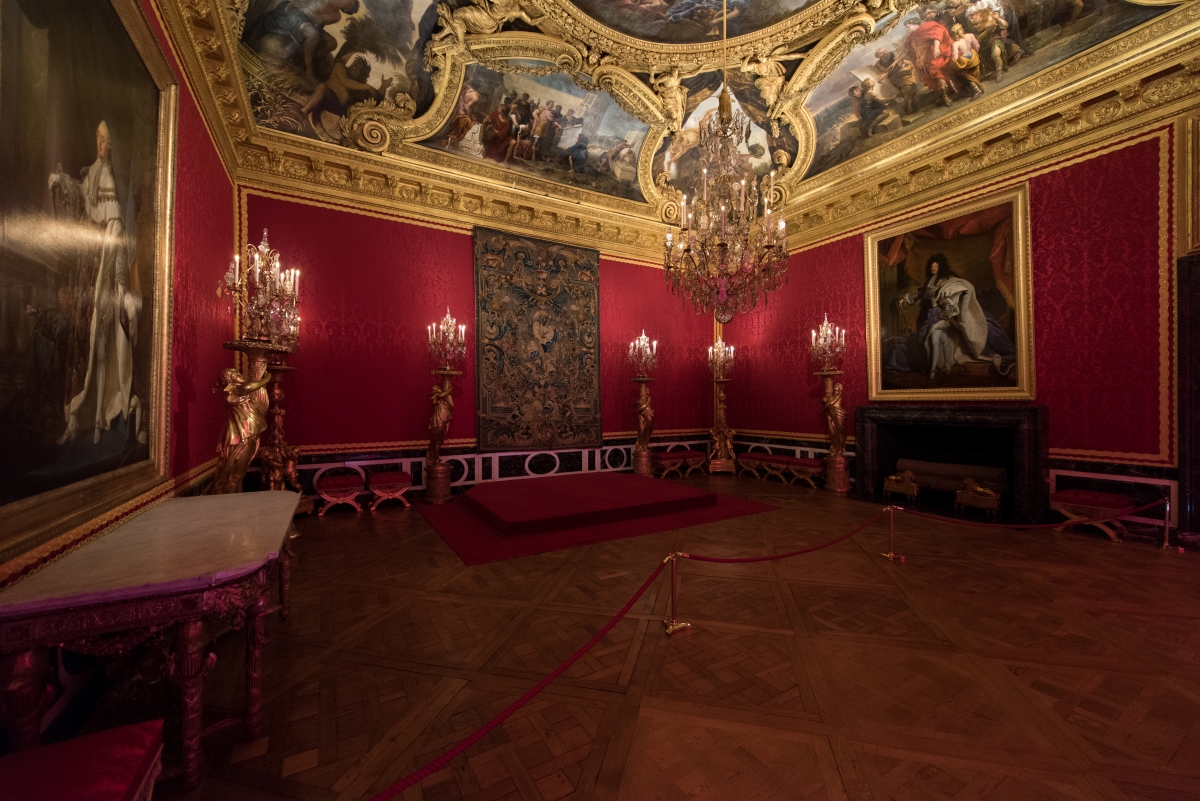
The Salon d’Apollon was the Sun King’s bedroom from 1673 to 1682 and is from top to bottom dedicated to Apollo… thus a bit to Louis XIV himself. The room was used as a Throne Room from 1682 on and hosted the silver throne of the Sun King. During the soirées, it was used for dancing. Louis XIV himself commissioned the ceiling paintings, showing Apollo chariot accompanied by the figures of France, Magnanimity, Magnificence and the four seasons. The four continents are represented in the four corners of the ceiling and the highlight of the room is once again Louis himself. This time in form of the famous Hyacinthe Rigaud portrait. It was made in 1701 as a gift for the new King of Spain, but everyone was so in awe of it that copies of it were ordered. Louis kept the original himself, which is now in the Louvre, and the one in Versailles is one of said copies.
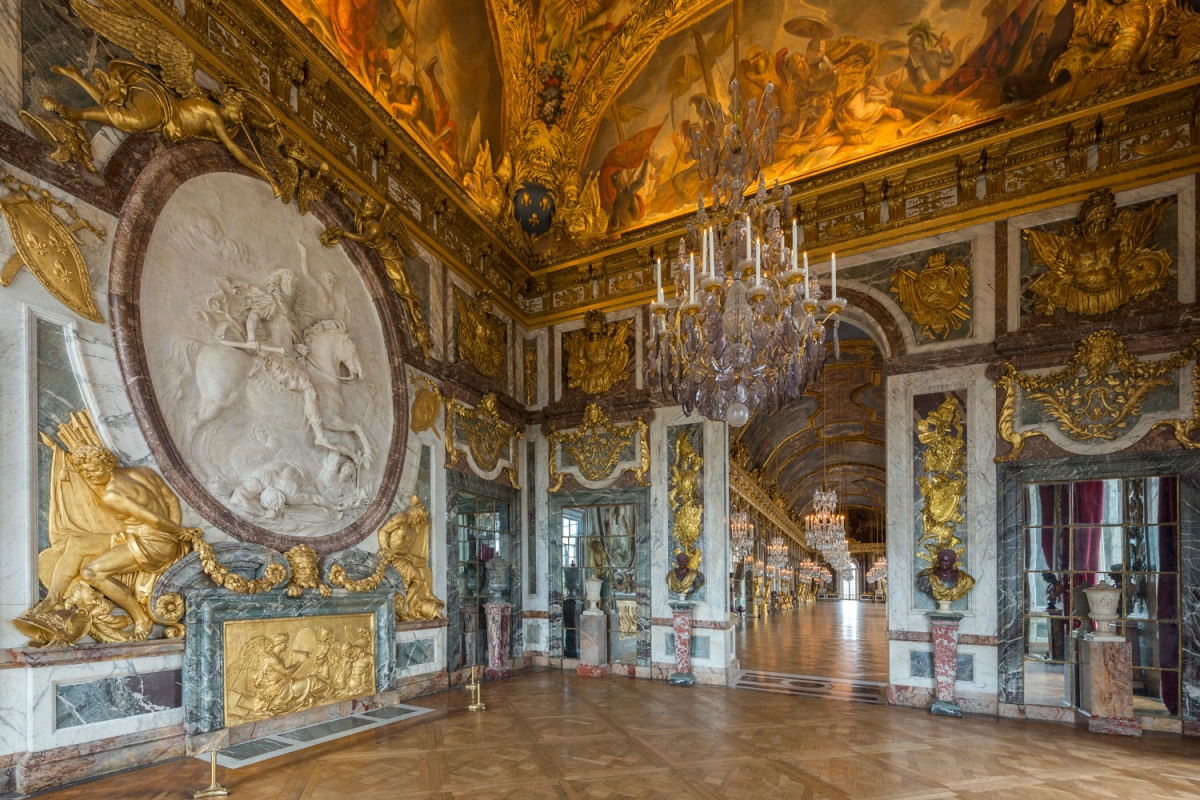
Upon leaving the Salon d’Apollon, one enters the Salon de la Guerre. It is no part of the Grand Appartement du Roi, but makes for a nice finish. This room was built by Hardouin Mansart, starting in 1678, and Le Brun finished the decorations in 1686. It is one big tribute to Louis XIV and his military skills and even features a bas-relief depicting Louis XIV on horseback trampling his enemies, along with walls covered with marble panels decorated with six trophies and weapons in gilded bronze. The muse of history records the King’s great deeds in the fireplace bas-relief. Interestingly, the fireplace is a fake one and does not actually work. On the ceiling is a personified depiction of France, armed and sitting on a cloud, on her shield a portrait of Louis XIV. France’s are shown as defeated in the arches. Germany kneels down with an eagle. Spain makes threats with a roaring lion. Holland overturned on another lion. The fourth arch depicts Bellona, the goddess of war, in a rage of fury between Rebellion and Contention.
A large door opens into the spectacular Hall of the Mirrors, from which one can reach the Appartement du Roi, and, on the opposite end, the Grand Appartement de la Reine.
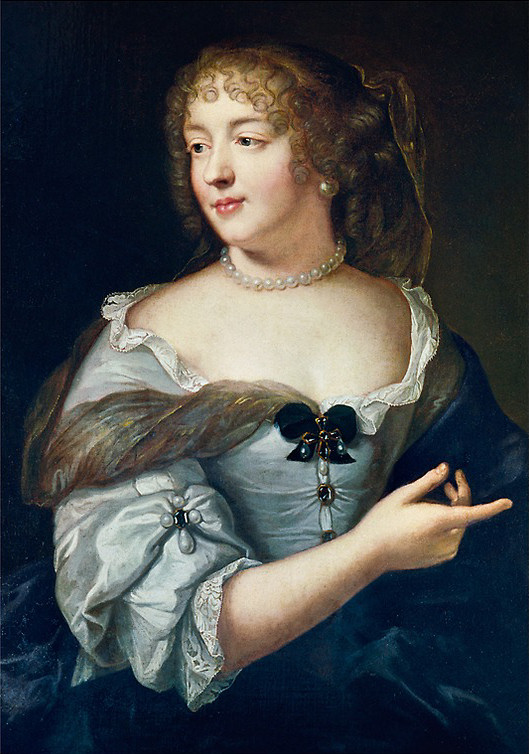
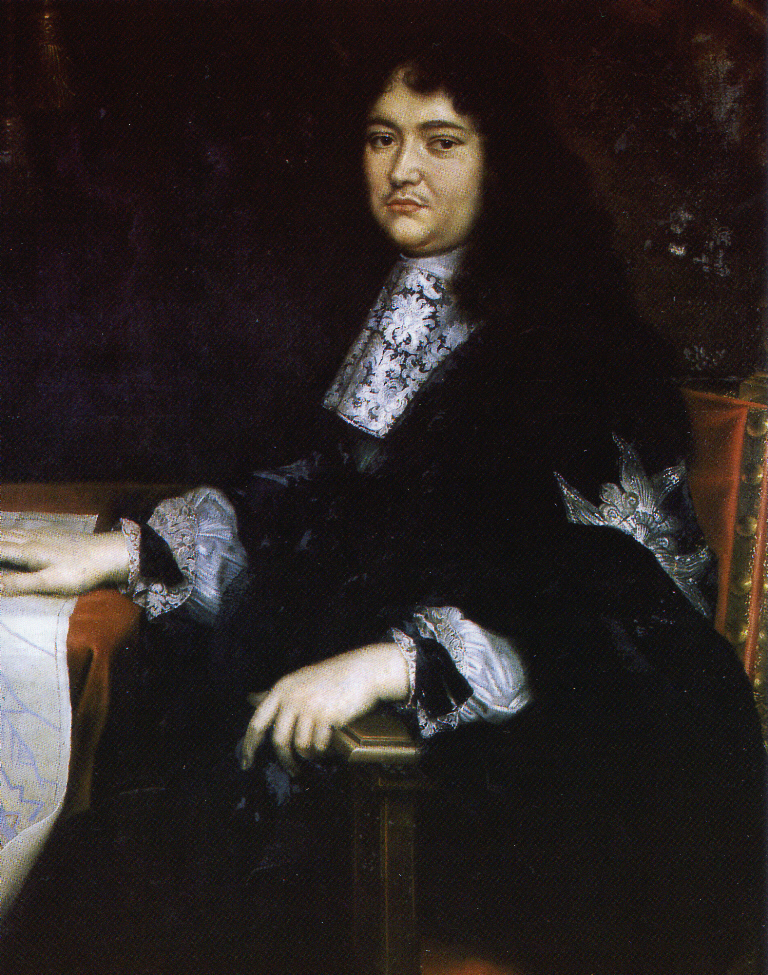

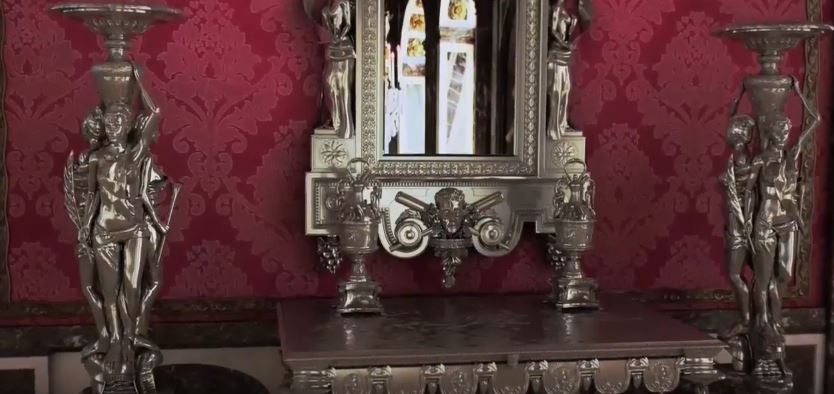
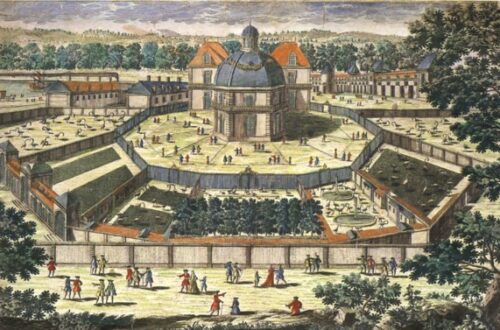
2 Comments
P^2
Hello Aurora!
Thanks for another wonderful post. I read everything you put up, and although I don’t comment on each one, please know that the time and effort you have put into each one of your posts is thoroughly appreciated, at least by me!
I have a question for you. I was visiting a public garden with some truly spectacular fountains yesterday, and I know that the French palaces during Louis XIV’s reign had a lot of them. (It is my understanding that the real Monsieur constructed some particularly fine ones at St. Cloud- a place to add to my bucket list.) How did those work? I can only imagine that they had men or maybe draft horses continuously working manual pumps to force the water through, but given the amount of sophistication that they had with with engineering and construction at that time, I am thinking they possibly had something better. Do you know anything about that sort of thing? If not, is can you point me to where I can find out more about how things like that worked in the 16th century? Thanks in advance!
Aurora von Goeth
Have a look at the Marly Machine. It was a giant pump used to get water to Versailles. A lot of the fountains worked due to basic gravity. Like Latona and Apollo at Versailles. Latona gets her water from a basin at the opera, which is higher situated than Latona. From Latona, the water goes down to the lower situated Apollo fountain and from there into the Grand Canal, from which it is pumped up again to the opera basin. Unfortunately, a lot of the water vanishes on the way either by the means of broken pipes in the ground or when it is windy the water does not land in the fountain basins again. Versailles never had that much water itself and it had to be brought there via pipes and such things, but it still wasn’t enough.